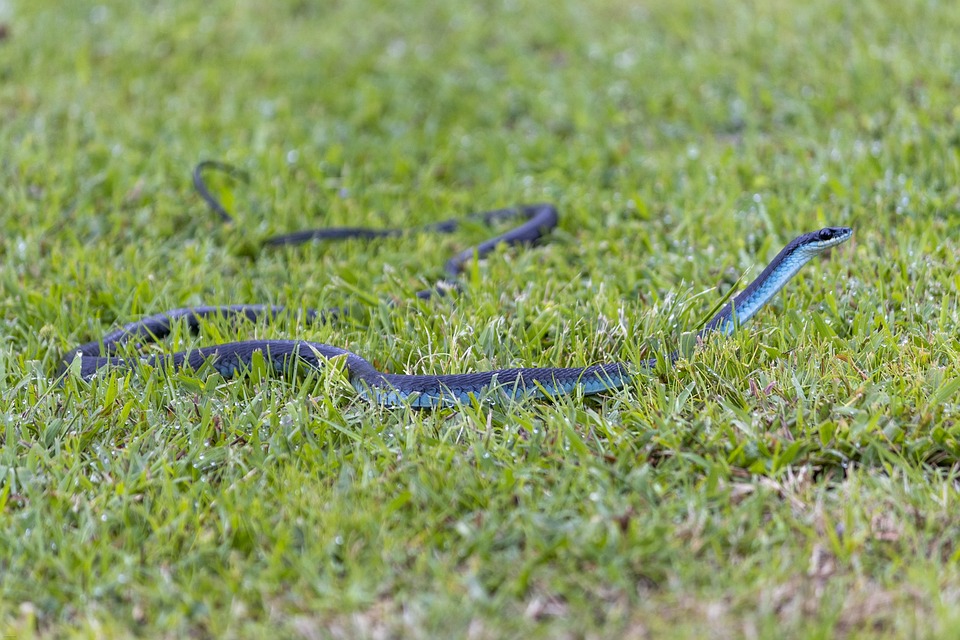Introduction
The Cottonmouth snake, also known as the water moccasin, is a widely distributed, lethal reptilian species mostly found in the southeastern United States. These venomous snakes are considered pit vipers and belong to the Agkistrodon genus. This article unravels the fascinating characteristics of the Cottonmouth snake, including its appearance, habitat, and unique defensive abilities. In addition, we’ll examine the potency of its venom and what to do when encountering one of these dangerous creatures.
Appearance and Identification
Cottonmouth snakes are easily identifiable by their robust, muscular bodies, and broad, triangular heads. They can grow up to an average length of three to six feet and have a distinct color pattern that varies from dark brown to green, olive, or even black. Younger Cottonmouth snakes are more vibrantly colored, often exhibiting bold patterns of lighter crossbands across their bodies. As the snake ages, these patterns tend to fade and become obscured by darker pigment. Another unique characteristic of the Cottonmouth snake is their bright white mouth lining, which they exhibit during a threat display.
Habitat and Behavior
As their alternative name suggests, water moccasins are excellent swimmers and primarily inhabit slow-moving or stagnant bodies of water, such as swamps, lakes, ditches, and marshes. They are occasionally found in brackish waters along the coastal regions as well. Cottonmouth snakes are notorious for their aggressive nature and defensive display when cornered or threatened. These snakes will coil their bodies tightly, elevate their heads, and open their mouths wide to reveal their namesake white interior. In addition, they produce a strong, musky odor as a further deterrent.
Venom and Bites
Like all pit vipers, Cottonmouth snakes possess heat-sensing pits located between their eyes and nostrils, which enable them to accurately target their prey even in complete darkness. They use their hinged, long fangs to inject venom into their prey – usually small animals such as rodents, fish, and amphibians. Their venom is potent and primarily hemotoxic, affecting the blood and tissue of the victim and causing swelling, pain, and, in severe cases, necrosis.
Although Cottonmouth snakes are responsible for only a small percentage of snake bites in the United States, their bites should be treated as medical emergencies. Symptoms of a Cottonmouth bite may include nausea, vomiting, difficulty breathing, and rapid heartbeat. If untreated, severe envenomation can lead to tissue damage, kidney failure, or even death. It is essential to remain calm and seek immediate medical attention if bitten by a Cottonmouth snake.
Prevention and Encounters
To avoid encountering a Cottonmouth snake, one should be aware of their preferred habitats and remain vigilant when outdoors in these areas. Wearing appropriate clothing such as long pants and boots can offer some protection from bites. Additionally, one should maintain a safe distance from any snake they encounter and give the animal plenty of space to retreat.
Conclusion
Cottonmouth snakes are fascinating creatures with their unique appearance, behavior, and potent venom. Despite their intimidating reputation, these snakes play a significant role in controlling rodent populations in their habitats. By respecting their space and taking proper precautions, it is possible to coexist safely with these dangerous but essential members of our ecosystem.
Frequently Asked Questions
Do Cottonmouth snakes always stand their ground when threatened?
Not always. While they are known for their defensive display, a Cottonmouth snake will typically retreat if given the chance. Only when cornered or provoked will they engage in their threat display and potentially strike.
Can Cottonmouth snakes climb trees or go underwater?
Yes, they are excellent climbers and swimmers, often found basking on tree branches or submerged in the water when hunting.
What is the difference between a Cottonmouth and a Water Snake?
While they share a similar habitat, Cottonmouth snakes possess a wider, more triangular head, heat-sensing pits, and a white mouth lining unique to their species. Water snakes tend to have rounder, narrower heads and do not possess these heat-sensing pits or the characteristic white mouth lining.

No responses yet